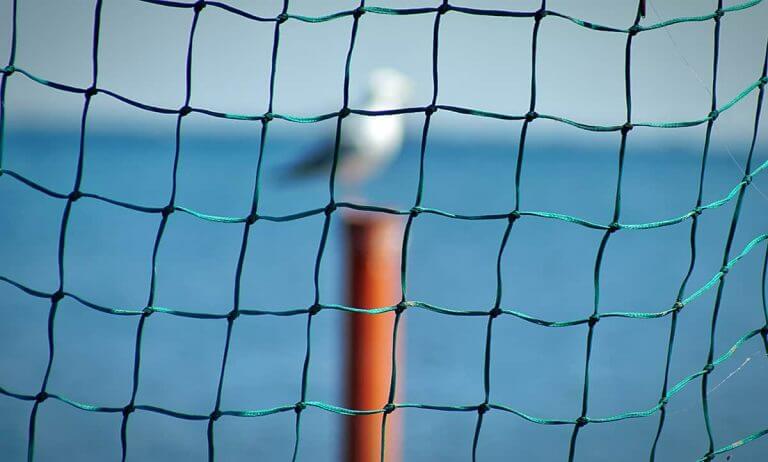Preparation is key when it comes to keeping invasive birds away from your premises. Pesky birds such as pigeons and gulls can often take up residence in the plumbing ventilation shafts, solar panels, garages, chimneys, and gutters of a home or workspace. These birds can make a nuisance of themselves by blocking up rainwater gullies on buildings with their faeces and nesting material. It is important to bear in mind that once they are permanently roosted, pest birds can become very difficult to get rid of. Bird infestations can leave you with health hazards, odorous walkways, chewed up electrical or wiring systems as well as a damaged building façade.
Choosing to install bird netting as a preventative measure will not only save you time and money, but also help reduce health risks to the inhabitants of a residential or commercial property.
In this article, we share some information on bird netting and how they can protect your property from invasive birds.
What is the difference between bird netting and bird spikes?
Bird netting is a knotted lattice made from thick strong twine. It’s an effective, physical barrier that covers the spaces where potential roosting birds will try to land. Bird netting is a great choice for bird proofing buildings with multiple potential landing edges, rafters, ceilings, ventilation areas, and industrial rooftops. The black colour of the netting also absorbs light and makes these nets less visible from the ground.
Bird spikes on the other hand, are a deterrent rather than a barrier. They have a thin base out from which spikes protrude and are usually made of stainless steel. While spikes with narrower gaps are used for smaller species of birds, higher and wider spikes are required for larger birds. The height of these metal spikes are also higher than the legs of most birds, deterring them from landing. Installation of bird netting is generally recommended to fully eliminate all nuisance birds.
When should bird netting be installed?
Once you start to see an undesirable amount of birds gathering around your building, you may want to consider seeking the services of a professional company. Ideally, you would be aiming to prevent them from nesting on your building, and so it would be worth getting bird netting in place as soon as possible. If you have not managed this, and birds have gotten into small spaces that are not easily visible from the ground, all is not lost. Start by arranging to have the area cleaned out. Once thoroughly cleaned and disinfected, you can then arrange for netting to be installed.
How durable is bird netting?
The twine that makes up netting is constructed from high density polyethene, which is pre-stretched and heat treated. This allows bird netting to stand up to the rigours of the Australian climate as well as take damage from the birds attempting to roost. The material is flexible enough to cover all shapes of buildings, eaves, and ledges but does not easily sag as it does not absorb water or moisture from the atmosphere. The material is also tested to industry safety standards for net breaking loads. So you can rest assured that the durability of the kit would be effective against all types of pressure from birds.
What size of netting should be installed?
This will depend largely on the species of bird you want to exclude from the premises. The (smaller) 19mm squares netting is heavier but will protect against all bird sizes. For areas where seagulls are the major concern, the 60mm square nets is sufficient.
Can anyone install bird netting?
Due to the extensive labour required to install the nets, you will need to employ the services of a professional firm. Despite the slightly higher initial cost that comes with such a service, a professionally installed netting can ensure permanent pest bird exclusion.
At VEXO, we have over 30 years’ experience in producing custom-made, high-quality solar panel bird mesh kits and bird netting for wholesale through rigorous quality control and testing. Get in touch with our experts today to protect your property as well as those who live and work in it!

